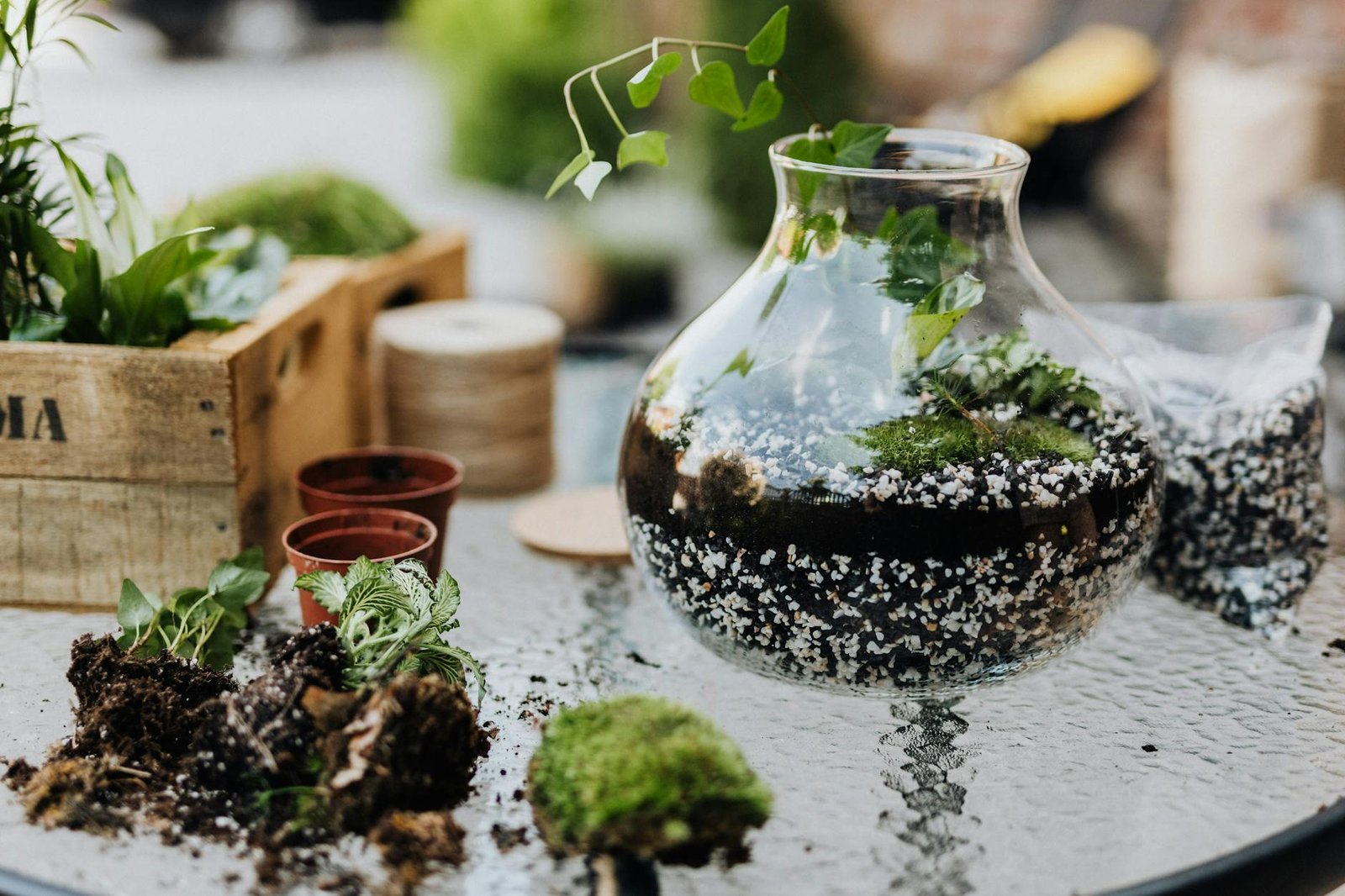Terrarium Plant Selection
When it comes to creating a beautiful terrarium, selecting the right plants is essential. Terrarium plants should not only thrive in the enclosed environment but also complement the overall aesthetic of your miniature paradise. In this section, we will explore the basics of terrarium plants and the factors to consider when choosing them.
Understanding the Basics of Terrarium Plants
Terrarium plants are specially chosen to thrive in the unique conditions of a terrarium. These miniature ecosystems mimic the natural environment, providing plants with the necessary moisture, sunlight, and humidity. When selecting plants for your terrarium, it’s important to consider their growth habits, adaptability to low light levels, and ability to tolerate high humidity.
There are two main types of terrariums: closed and open. Closed terrariums have a sealed or partially sealed lid, creating a self-sustaining environment where plants recycle moisture through transpiration. Open terrariums, on the other hand, allow for more air circulation and are suitable for plants that prefer drier conditions.
Factors to Consider When Choosing Terrarium Plants
When choosing plants for your terrarium, consider the following factors:
Light Requirements: Different plants have varying light requirements. Some thrive in bright, indirect light, while others prefer low-light conditions. Assess the lighting conditions of your terrarium location and choose plants accordingly. You may need to provide supplemental lighting if natural light is limited.
Growth Habit: Consider the growth habit of the plants to ensure they fit within the limited space of your terrarium. Look for plants with compact growth or those that can be easily pruned to maintain their size and shape.
Moisture Needs: Terrariums tend to create a humid environment, especially in closed systems. Choose plants that can tolerate higher humidity levels without succumbing to rot or fungal growth. Succulents, for example, may not be suitable for closed terrariums due to their preference for drier conditions.
Maintenance Requirements: Consider the level of maintenance you are willing to commit to. Some plants require more frequent pruning, grooming, or watering than others. Select plants that align with your time and care capabilities.
To learn more about specific plants suitable for terrariums, refer to our article on terrarium plants. It’s important to note that the size and type of your terrarium will influence the number and variety of plants you can include. Also, ensure you have the necessary terrarium supplies to create and maintain your miniature paradise.
By understanding the basics of terrarium plants and carefully considering the factors mentioned above, you can choose the perfect plants to create a thriving and visually appealing terrarium.
Best Plants for Terrariums
When it comes to selecting plants for your terrarium, there are several options that thrive in the enclosed environment of these miniature gardens. Each type of plant brings its own unique charm and characteristics to the terrarium. Here are some of the best plants to consider for your terrarium:
Succulents
Succulents are a popular choice for terrariums due to their ability to store water in their leaves, stems, or roots. They come in various shapes, sizes, and colors, making them versatile for different terrarium designs. Some common succulent varieties that work well in terrariums include:
| Succulent Variety | Height (inches) | Light Requirements |
|---|---|---|
| Echeveria | 4-12 | Bright indirect light |
| Haworthia | 2-8 | Partial shade |
| Sedum | 2-6 | Full sun to bright indirect light |
Succulents are low-maintenance plants that require well-draining soil and infrequent watering, making them ideal for the self-contained ecosystem of a terrarium.
Ferns
Ferns are another excellent choice for terrariums, especially those with a more humid environment. These lush, green plants add a touch of elegance and a tropical feel to your miniature paradise. Some popular fern species suitable for terrariums include:
| Fern Species | Height (inches) | Light Requirements |
|---|---|---|
| Boston Fern | 12-36 | Indirect light |
| Maidenhair Fern | 8-24 | Bright indirect light |
| Bird’s Nest Fern | 8-24 | Shade to partial shade |
Ferns thrive in the moist and shaded conditions found within terrariums. They require consistent moisture and indirect light to flourish.
Mosses
Mosses are versatile and resilient plants that can bring a lush carpet-like appearance to your terrarium. They are particularly well-suited for closed terrariums where they can benefit from the high humidity levels. Some common types of mosses used in terrariums include:
| Moss Type | Height (inches) | Light Requirements |
|---|---|---|
| Cushion Moss | 1-4 | Shade to partial shade |
| Sheet Moss | 1-2 | Shade to partial shade |
| Haircap Moss | 1-2 | Shade to partial shade |
Mosses require consistently moist soil and prefer shaded conditions. They can thrive in various terrarium setups, from woodland-themed to fairy garden-inspired.
Air Plants
Air plants, also known as tillandsias, are unique plants that don’t require soil to grow. They can be attached to branches, rocks, or other decorative elements within the terrarium. Air plants absorb moisture and nutrients from the air, making them well-suited for open terrariums or those with good air circulation. Some popular air plant varieties for terrariums include:
| Air Plant Variety | Height (inches) | Light Requirements |
|---|---|---|
| Tillandsia Ionantha | 2-6 | Bright indirect light |
| Tillandsia Bulbosa | 6-12 | Bright indirect light |
| Tillandsia Caput-Medusae | 6-12 | Bright indirect light |
Air plants require regular misting or soaking to ensure they receive enough moisture. They thrive in bright, indirect light conditions.
These are just a few examples of the many plant options available for your terrarium. When selecting plants, consider the specific requirements of each species, such as light, water, and humidity needs. By choosing the right plants for your terrarium, you can create a stunning miniature paradise that brings joy and beauty to any space. For more information on terrarium plants and how to care for them, visit our article on terrarium plants.










